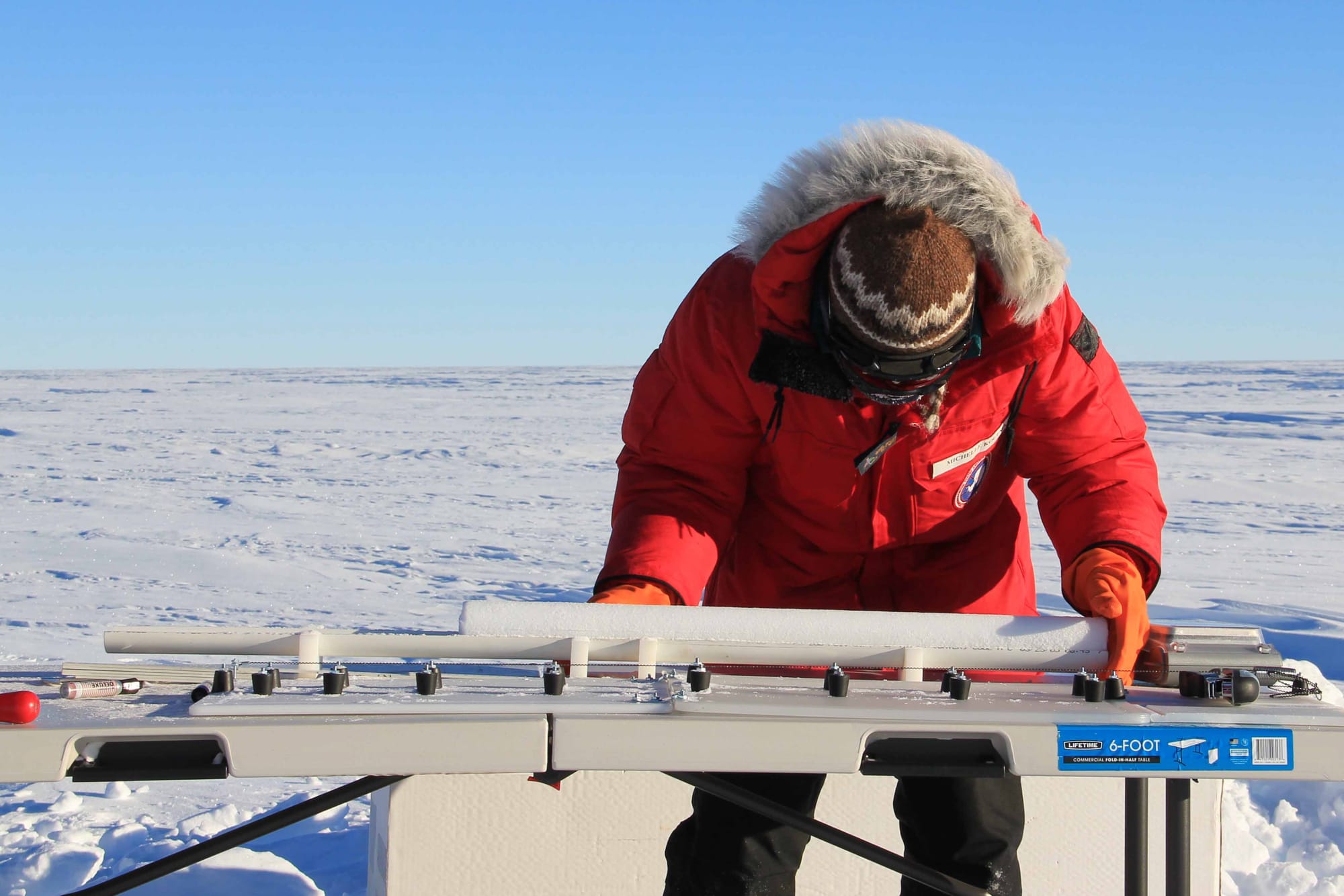Dealing with Denial: The Ice Core Argument

Dealing with Denial was inspired by speaking to Nigel Winser, formerly Director of the Royal Geographical Society and former Executive Director of Earthwatch; who had expressed the difficulty there could sometimes be in addressing specific areas of climate denial.
97% of peer reviewed scientific papers support that climate change is being driven by human factors such as the combustion of greenhouse gases relating to the combustion of fossil fuels and consequent impacts of same leading to knock on effects on the environment. The Guardian cites that only 60% of Australians accept that ‘climate disruption is human caused.’ Nature, has ascertained that 14.8% of US citizens do not ‘believe in climate change.’ The Policy Institute of King’s College London, have determined that in the UK 72% ‘say that climate change is mainly caused by human activities. Whilst these numbers may be relationally interesting, the most important take away is that there is still considerable climate denial in the face of clear science.
Those working in the industry, or informed by science need to combat mis and disinformation. This occasional series looks at key climate denial narratives and provides structure for correcting misinformation.
The Ice Core Argument
Ice core samples are an important tool for generating metrics that help scientists track historical atmospheric changes. In short, the drilling through and extraction of polar ice cores (like removing the core of an apple), provide data that can be dated, as bubbles in the ice provide snapshots of the atmospheric constitution in historical times. It is possible to identify historical events such as the eruption of volcanoes or the beginning of the industrial revolution by measuring gas contents of bubbles in such cores.
Of particular note is that CO2 records correlate to historical rises in temperature; when CO2 has been high, temperatures have been high, and vice versa. Climate scientists have determined that increases in CO2 have led to increases in temperature. This corresponds with the science that relates increased CO2 in the atmosphere exacerbating the enhanced greenhouse effect which leads to the Earth retaining more heat.
Climate denial often insists that instead of rising CO2 driving increases in atmospheric heat, changes in atmospheric heat have driven up CO2 levels. This is not without precedent, because prior to the widespread combustion of fossil fuels, fluctuation in temperature had driven changes in CO2. Climate denial purports that this is what is happening now and that focusing on reducing the emission of CO2 is a folly.
How does this happen? When the oceans warm they hold less CO2 and this means more CO2 is held in the atmosphere. Also ocean currents like the conveyor belt (the Atlantic Meridional Overturning Circulation) can slow down, because the difference in temperature around the oceans is lessened and this provides less drive for the circulation. In turn there is more warm water in the upper strata of the sea, which again holds less CO2 and leads to more being in the atmosphere. Moreover, whilst the cold CO2 rich ocean water is increasingly trapped beneath warmer waters, still upwells and releases CO2, even at a lower rate.
Climate denial suggests that this is what is continuing to happen. However, whilst there are still natural climate cycles that might or will impact these drivers, they have been entirely eclipsed by the scale of greenhouse gases that have been released by the combustion of fossil fuels, so the position held by denial, is wrong. Additionally feedback loops have been initiated as a result of this combustion, for example the burning of fossil fuels, have released CO2 and other greenhouse gases, which have led to global heating which is melting permafrost that is releasing further CO2 and accelerates global heating. Other feedback loops include the melting of polar ice resulting in a lowered albedo and consequent oceanic warming.
Summarily then, the immense scale of greenhouse gas emissions has supplanted the ability of natural climate cycles to be main determinants of CO2 and other greenhouse gases in the atmosphere. Anthropogenic activity is now evidently responsible for the CO2 in the atmosphere, and this produces the enhanced greenhouse effect that unequivocally is responsible for the increases in global temperatures and their concomitant effects that are having a global impact. Climate denial is also quick to determine that CO2 levels can lag behind atmospheric heating, but this is often just a reflection of the lag of feedback loops or secondary drivers of CO2 emissions. Whilst in the past the feedback loops were initiated by natural cycles, they are now being initiated by the combustion of fossil fuels. Whilst denial often posits that CO2 simply follows temperature increases, as it has in the past, unlike natural cycles, the current increase in CO2 is exceptional and driven by human activity, which far overshadows natural variation.
It is important to understand that in the Anthropocene it is no longer natural cycles that drive CO2 increases, but overwhelmingly and verifiably the impact of human action. Not only through the combustion of fossil fuels, but also historical feedback loops are the result of the persistent human appetite for non-renewable energy.